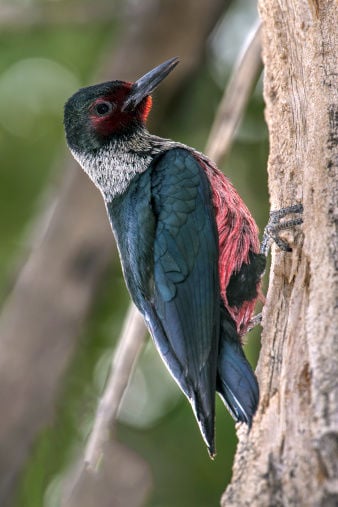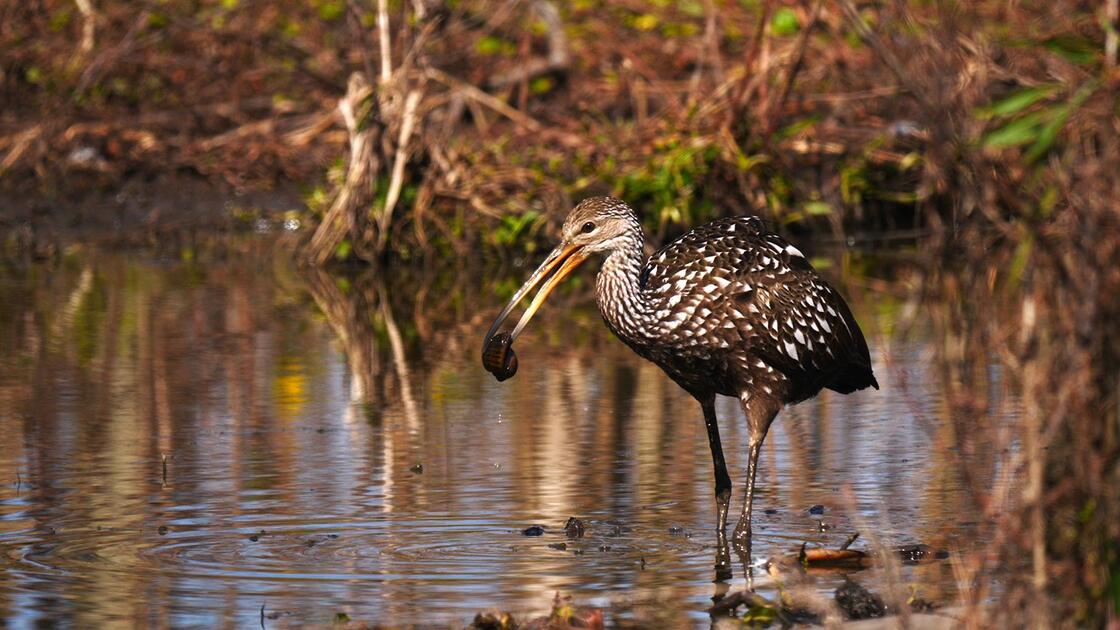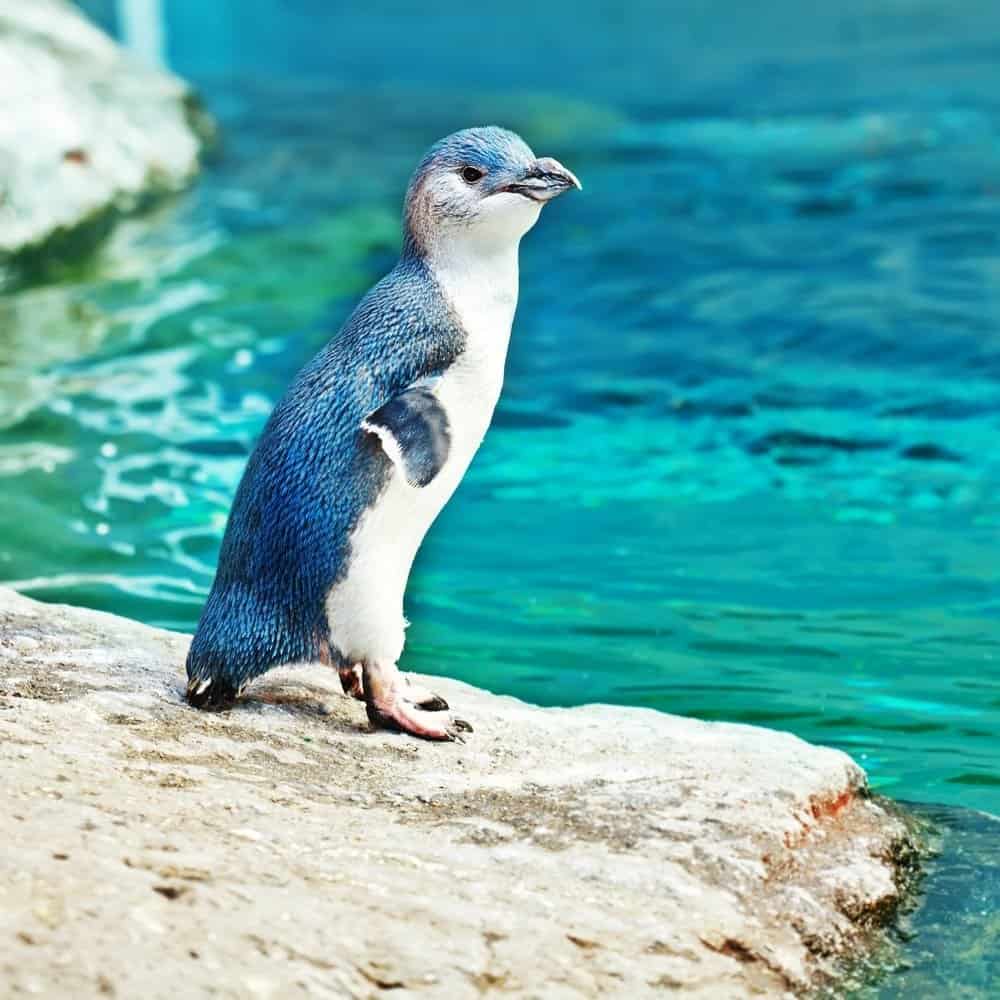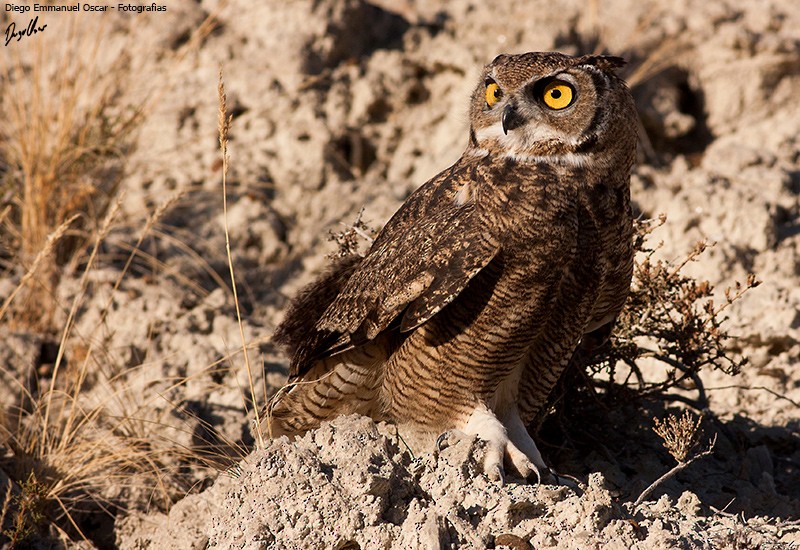L is a very awesome letter. But I don’t know what it does. Oh, wait, yes I do, it’s awesome! Anyway, today I’ll be talking about awesome birds that start with the awesome letter L!
The letter L is one of the more ubiquitous letters in the English alphabet. This letter is used in words like leashed, leaflet, lead, lobster, lizard, and many others. The letter is also used in the names of various birds. Some of them are large and some are very small. There are several that can be found all over the world, while others are specific to a certain area.
If you love birds like I love birds (more than most things) then you want to know which of the many, many, many birds that exist in the world start with the letter L. Well, look no further! The list I’ve compiled below is by no means comprehensive, but it’s a good starting point for anyone just beginning their passion for all things avian. I hope this list will help you start your lifelong journey to become an amateur ornithologist.
Lark Bunting (Calamospiza melanocorys)

Declared as the state bird of Colorado, the Lark Buntings are a sparrow species endemic to North America. These birds are the monotypic members of their genus and are found abundantly in the grasslands of North America.
Lark Buntings have a tiny body with a short, thick bill. The adults are strong sexually dimorphic in their breeding plumage; both sexes appear alike outside of their breeding season.
The breeding males are entirely black in color, save for two bold white wing patches, one on each side. In contrast, the non-breeding males and females have a dull, greyish brown body with light streaking all over.
Lewis’s Woodpecker (Melanerpes lewis)

Named after Meriwether Lewis, the American explorer, Lewis’s Woodpeckers are ranked among the largest woodpecker species found in the Americas.
These woodpeckers have a black face, a grey collar, and a reddish breast. You can spot a bold red patch on their face as well. Their underbody has a pinkish touch, while wings and tail are black.
The flight feathers of Lewis’s Woodpeckers are much broader than other woodpeckers, which is why their flight style is more similar to the crows than their own relatives.
Limpkin (Aramus guarauna)

Limpkins are large waders primarily found in the warm wetlands of the Americas. These birds are known by several names, including “Crying Bird,” “Courlan,” and “Carrao.”
Limpkins have been named after their visible limp-like walking style. Apple snails dominate the diet of these birds, but they will also eat mollusks occasionally.
Limpkins have a drab brown plumage, with little difference in the sexes in terms of it. All adults have a brown face and neck with heavy white streaking, while lesser streaks on their chest and upper parts, and unmarked lower body.
The sex of a Limpkin can be distinguished based on their size; the males tend to be slightly larger than their female counterparts.
Least Bittern (Ixobrychus exilis)
Just as their name suggests, the Least Bitterns are among the smaller members of the heron family. Within the Americas, they’re the smallest bittern species.
Least Bitterns have a brown head and upper parts with a significant black cap atop their head. Their throat and undersides are white in contrast. While the males have a greenish gloss on their crown, their female counterparts have a dark brown cap instead.
Both sexes have a yellow bill and eyes.
Laughing Kookaburra (Dacelo novaeguineae)

Belonging to the family of the tree kingfishers, the Laughing Kookaburras are the largest kingfisher species in the world. They’re native to Australia, particularly the eastern region, where they frequent the woodlands and eucalypt forests.
Laughing Kookaburras have a mainly cream-colored body with darker wings and tails. Their crown has pale rufous feathers, with a small brown stripe below their eyes. While their wings are brown, the tail is brighter, with a reddish-orange hue and blue shoulder spots.
The adult males are smaller in size than their female counterparts and have more blue spots on their rump.
Laurel Pigeon (Columba junoniae)

Named after their preference for the laurel forest habitats, the Laurel Pigeons have received a Near-threatened Species status by the IUCN. These birds are of Spanish nativity, where they’re commonly found in the Canary Islands.
Laurel Pigeons are a resident species and have a relatively large body. Their plumage is mainly sepia brown in color, with reddish undersides. Only their grey tail is colored differently, with white bands on it.
Lineated Woodpecker (Dryocopus lineatus)
Endemic to South America and the Caribbean islands, the Lineated Woodpeckers are a large woodpecker species with five different subspecies. These woodpeckers are closely related to the Pileated Woodpeckers that inhabit the United States and Canada.
In appearance, Lineated Woodpeckers resemble the Crimson-crested Woodpeckers and have mainly black plumage. While their head and upper parts are black, the undersides are pale white with black bars scattered all over.
You can distinguish the sex of these birds by the coloration of their heads. The males have a red crest with two red stripes running from their face to their throats, while in their female counterparts, all these parts are black.
Little Egret (Egretta garzetta)

Little Egrets are small members of the heron family with a partially migratory nature. These aquatic birds breed in Asia, Australia, Africa, and Europe, with their northernmost population migrating to the southern edge of their range during winters.
Little Egrets commonly sport an all-white plumage, although they do have darker morphs with a greyish blue plumage. These egrets are sexually monomorphic. The adults have a long neck and long, dark legs, and a dark pointed bill.
In the breeding season, they develop two long plumes on the back of their nape.
Laughing Dove (Spilopelia senegalensis)
The Laughing Doves are a small, resident dove species that are primarily ground foragers. These doves commonly inhabit semi-desert and scrub areas and are often spotted in pairs.
Laughing Doves are named after their chuckling call sounding like “croo-doo-doo-doo.” Other names that they’re referred to as are “Senegal Dove,” “Palm Dove,” and “Laughing Turtle Dove.”
Laughing Doves have a slim body with a relatively long tail. They have a pale, pinkish head and throat with buff-colored undersides. Their upper parts are a darker shade of brown. Both sexes of these birds have an identical appearance and are sexually monomorphic.
Lazuli Bunting (Passerina amoena)

Named after the attractive blue gemstone, Lapis Lazuli, the Lazuli Buntings are small buntings from the cardinal family. These buntings are migratory and are endemic to North America.
Both sexes of the adult Lazuli Buntings are sexually dimorphic. The males sport a bright blue head and back, with grey edges to their wings and white wing bars. On their chest, you can find a rufous patch with a white belly and rump.
On the other hand, their female counterparts have a greyish head and an overall warmer plumage.
Lesser Goldfinch (Spinus psaltria)
Closely related to the Lawrence’s and American Goldfinches, the Lesser Goldfinches are a small cardueline finch species found in the Americas. Within their range, they’re the smallest goldfinches. Some explorers claim them to be the smallest true finches globally.
Lesser Goldfinches have a tiny, petite body and show sexual dimorphism in their plumage. The males are dark-headed with a bright yellow underbody. Their wings and tail are greyish in color, with several white patches scattered on them.
On the other hand, their female counterparts have a dull, greyish-green body with a thin white wing stripe and no white on their tail.
Lizard Buzzard (Kaupifalco monogrammicus)
Closely related to the Accipiter Hawks, the Lizard Buzzards are small birds of prey species endemic to the sub-Saharan regions of Africa. These raptors have been named after their tendency of feeding on lizards and are also referred to as “Lizard Hawk” in some regions.
These buzzards have a small body and short wings, with the females weighing more than their male counterparts. Their head and upper parts are all grey, with white undersides covered in black barring. Both sexes sport identical plumage.
Lucy’s Warbler (Leiothlypis luciae)
Named after the daughter of the ornithologist Spencer Fullerton Baird, Lucy’s Warblers are the smallest member of the New World Warblers globally. They’re also one of the two cavity-nesting warbler species in the world.
Lucy’s Warblers are found within North America and are perhaps the palest member of the wood-warbler family. The adults can be differentiated by their crowns; the males sport a rufous crown, while their female counterparts lack them.
Both sexes of these birds have a pale grey head and upper parts with white undersides. Their bills are small and pointed, with white eye-rings and a rufous rump.
Little Penguin (Eudyptula minor)

Being the smallest penguin species in the world, the Little Penguins are tiny penguins with a steadily declining population due to threats like food availability, climatic change, and plastic pollution.
In their breeding range, these penguins are also known as “Fairy Penguins” and “Little Blue Penguins.”
The head and upper parts of Little Penguins are colored in the dark blue shade, with stark white undersides. Their irises are bluish-grey with pink feet and black soles. Both sexes are sexually monomorphic.
Like other penguins, the Little Penguins have a surprisingly long lifespan and can live up to 25 years in captivity.
Lemon Dove (Columba larvata)

Endemic to sub-Saharan Africa, the Lemon Doves are a sexually dimorphic dove species that are also known as “Cinnamon Dove.” These birds primarily reside in the montane forests.
Lemon Doves are fairly small for a dove and display sexual dimorphism in plumage. The males have brown upper plumage with green iridescence on their neck and cinnamon brown underparts.
On the other hand, their female counterparts have a light brown plumage with grey marks on their face. Both sexes have red feet, irises, and a black bill.
Lilac Kingfisher (Cittura cyanosis)
Also known as “Celebes Flat-billed Kingfisher,” the Lilac Kingfishers are the monotypic members of their genus. These kingfishers are endemic to Indonesia, where they can be found on the islands of Sangihe, Talaud, and Sulawesi.
Just like the other kingfisher species, Lilac Kingfishers have a short body and tail with a relatively long bill. They are sexually dimorphic, with the males having a brown head and back, with pale rufous underparts.
They also have a dark blue eye mask and pale lilac ear covert feathers, which can barely be used as a field identification mark.
The females have a black eye mask and an overall duller plumage than their male counterparts.
Little Green Pigeon (Treron olax)
Being the smallest member of their genus, the Little Green Pigeons are a small pigeon species found in the southeastern regions of Asia. These pigeons primarily inhabit the tropical and subtropical lowland forests.
Both sexes of adult Little Green Pigeons have an olive-green body with a darker head. You can distinguish between the sexes by their neck patch. The males have an orange neck patch which is absent in their female counterparts.
Lappet-faced Vulture (Torgos tracheliotos)
Lappet-faced Vultures are declared to be an Endangered Species by the IUCN. The main threats to their steeply declining population are habitat destruction and increased cultivation.
Lappet-faced Vultures are monotypic members of their genus and are also referred to as the “Nubian Vulture.”
Belonging to the Old World Vulture family, Lappet-faced Vultures are quite large and long-winged with dark brown plumage and a pink head. Their undersides are pale buff in color, while their feet feathers are stark white.
Little Crow (Corvus bennetti)
As their name suggests, the Little Crows are among the smaller members of the corvid family. These crows are endemic to Australia, where they tend to inhabit dry areas near the deserts.
In appearance, Little Crows closely resemble Torresian Crows and have a slim body covered in an overall glossy black plumage. Their bill and legs are black as well, except for neon-colored eye-rings.
Both sexes have identical plumage, and in terms of size, there is little information about their dimorphism.
Laughing Gull (Leucophaeus atricilla)
Named after their laugh-like calls, the Laughing Gulls are a migratory gull species that have a widespread population in North and South America. These gulls have two subspecies.
Laughing Gulls are sexually monomorphic, but can you witness some changes in their plumage according to the season. In their breeding season, these wading birds have a dark hood on their face, dark wings, and tail, while the rest of their body is white.
They have a long, red bill and dark legs. During winters, their black hood grows considerably lighter in the shade.
Laggar Falcon (Falco jugger)
Laggar Falcons are members of the Hierofalcon group that are primarily found in Asia. They’re also known as “Lugger Falcon” or simply “Jugger” and are commonly distributed across India, Pakistan, Nepal, Bhutan, Bangladesh, and Afghanistan.
Laggar Falcons have a pale, sand-colored plumage with whitish undersides covered dark bars. Both sexes appear similar.
Although these falcons were once quite common within their range, they’re now listed as a Near-threatened Species.
Lanner Falcon (Falco biarmicus)

Belonging to the same genus as Laggar Falcons, the Lanner Falcons are another member of the Hierofalcon group that are endemic to Africa and Europe. The another name they’re known by is “Feldegg’s Falcon.”
Lanner Falcons have a slate-grey head and upper body with pale greyish-blue undersides. You can spot a reddish touch to their head. Like most falcons, they’re also sexually monomorphic.
Long-tailed Ground-Dove (Uropelia campestris)
Long-tailed Ground Doves are a monotypic member of their genus that occurs in Bolivia and Brazil. The natural habitats of these birds include flooded grassland and dry savannahs.
As their name suggests, Long-tailed Ground Doves are primarily ground-dwelling birds with a muted, sand yellow plumage with buff-colored undersides. Little is known about the sexual dimorphism between the sexes.
Letter-winged Kite (Elanus scriptus)
Letter-winged Kites are tiny, rare kite species that occur within Australia. They are a near-threatened species that have a distinctive W or M-shaped marking on their underwings.
In appearance, these kites closely resemble the Black-shouldered Kites and have an overall pale grey upper body, with a white head and undersides. Only the markings on their underwings are black in color. The female kites are heavier than their male counterparts.
Long-winged Harrier (Circus buffoni)
Found all over South America, the Long-winged Harriers are a raptor species belonging to the Accipiter group. These birds of prey are mainly distributed in the wetlands and grasslands of their range.
Long-winged Harriers have a distinct facial disk, a medium-sized body, and the characteristic long wings. Their face is a blend of white and brown with primarily brown upper wings, with a white underbody.
Lesser Flamingo (Phoenaias minor)

Found in northwestern India and sub-Saharan Africa, the Lesser Flamingoes are a near-threatened species belonging to the Old World Flamingo species.
Lesser Flamingoes are the smallest members of the flamingo family. They have a pale, pinkish-white plumage, with long, pink legs and a dark bill. While both sexes are sexually monochromatic, there is some variation in their size.
Levant Sparrowhawk (Accipiter brevipes)
Levant Sparrowhawks are small bird of prey species that breed in southeast Europe and southern Russia. These birds are migratory, traveling south to southwestern Iran and Egypt during winters.
The face and head of these sparrowhawks are a mix of blue and grey, while their undersides are a pale white. Like all the other raptors, the females are larger in size than their male counterparts.
Lesser Horned Owl (Bubo magellanicus)
Commonly found in the southern regions of South America, the Lesser Horned Owls are a typical owl species that are the largest species within their range. They’re also referred to as “Magellanic Horned Owl.”
Lesser Horned Owls have a large head with two ear tufts extending into a seemingly horn-like structure. The color of their plumage is mainly greyish-brown, with a paler underbody with dark blotches. They have yellow eyes and a short, hook-tipped bill.
Lesser Horned Owls have a distinctive, deep, hooting call that vibrates within a considerable range. They are often compared to the Great Horned Owls, which are similar in appearance but have a larger body and stronger feet.
Conclusion: Birds That Start With L
I hope this article on birds that begin with the L has been helpful and you had fun along the way. If so, please share it with your friends, co-workers, or family members on social media so they too can have a good time learning about these birds. Who knows? Maybe it will inspire someone to go out and explore nature themselves!
Birds By Alphabet (A-Z List)
Birds that Start with A
Birds that Start with B
Birds that Start with C
Birds that Start with D
Birds that Start with E
Birds that Start with F
Birds that Start with G
Birds that Start with H
Birds that Start with I
Birds that Start with J
Birds that Start with K
Birds that Start with L
Birds that Start with M
Birds that Start with N
Birds that Start with O
Birds that Start with P
Birds that Start with Q
Birds that Start with R
Birds that Start with S
Birds that Start with T
Birds that Start with U
Birds that Start with V
Birds that Start with W
Birds that Start with X
Birds that Start with Y
Birds that Start with Z














